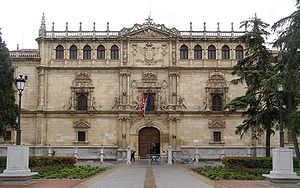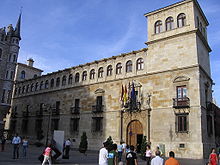Purism (Spanish architecture)
The introduction of the Renaissance in Spain coincided with a period of great political, economic and social splendor, after the union between Castile and Aragon, the end of the Reconquista, the discovery of America and the coming to power of the Habsburgs.
Although in its beginning the new style from Italy lived with the persistence of Gothic and Mudéjar forms, gradually took hold and served as the expression of the new political power, linked to the new conception of the Catholic Counter-Reformation.
In front of the excessive decorate of Plateresque style, the Purism sought ways simpler and refined, in a sober and classic line, balance and technical perfection, taking more on structural issues and harmonious proportions.
The architects have better preparation and training, with the publication of several theoretical treatises such as Las Medidas del Romano by Diego de Sagredo (1526), the first Renaissance treaty written outside Italy, which highlights the prevalence of proportion and the proper disposal of the elements over the decoration.
The Purism was characterized by the use of oval or barrel vaults, arches, half domes and carved decoration limited to some strategic areas, evaluating the smooth space as an exponent of this new more pure and harmonious aesthetic.
His main work was the Cathedral of Granada (begun in 1528), continuing the original Gothic design by Enrique Egas, who made numerous changes, became the presbytery in a round dome shaped, preceded by a large triumphal arch type.
The courtyard, of Bramante influence, is one of the masterpieces of the Purism and the Spanish Renaissance architecture, example of balance and perfection of classical, with two-story with columns of Doric-Tuscan order (lower) and Ionic (upper).




